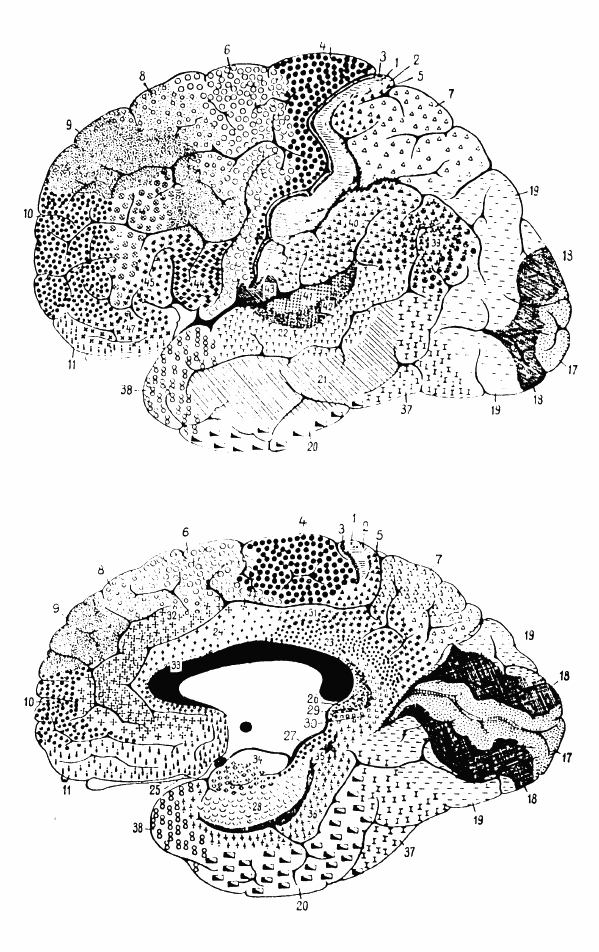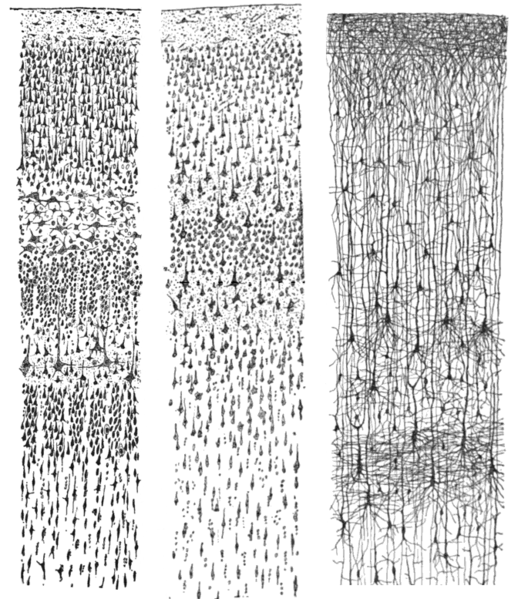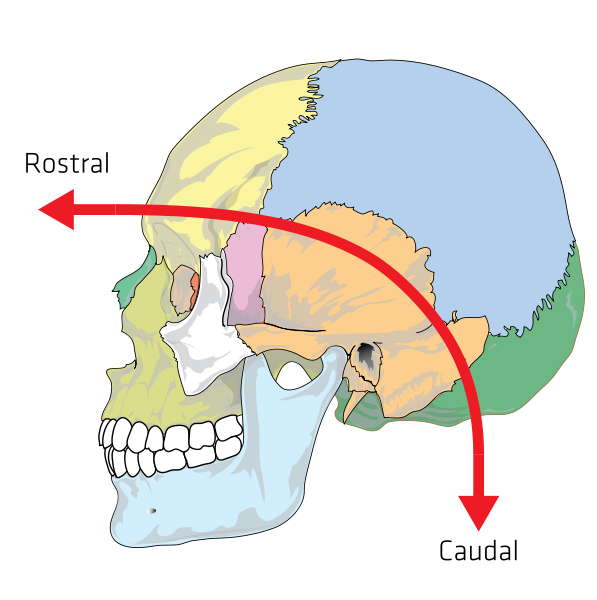Figure 1 –Dr Korbinian Brodmann, German Neurologist, Frontpiece of ‘Localisation in the Cerebral Cortex’, 1909, Public Domain*
Dr Korbinian Brodmann revolutionised the field of neuroanatomy by undertaking a systematic analysis of the microscopic features of the brains of humans and several other species. By doing this Brodmann was able to create brain maps. Brodmann divided these maps up into the eponymously named Brodmann Areas. There are 52 in all but the number of Brodmann Areas differ between species. When it came to the Temporal Region, Brodmann assigned the following Brodmann Areas (BA)
1. Brodmann Area 36 – the Ectorhinal Area
2. Brodmann Area 37 – the Occipitotemporal Area
3. Brodmann Area 38 – the Temporopolar Area
4. Brodmann Area 20 – the Inferior Temporal Area
5. Brodmann Area 21 – the Middle Temporal Area
6. Brodmann Area 22 – the Superior Temporal Area
Brodmann also describes three areas which along with the Superior Temporal Area are located on superior aspect of the Superior Temporal Gyrus. These are
1. Brodmann Area 52 – the Parainsular Area
2. Brodmann Area 41 – the Medial (Anterior) Transverse Temporal Area
3. Brodmann Area 42 – the Lateral (Posterior) Transverse Temporal Area
Figure 2 – Cytoarchitectonics of human brain according to Brodmann (1909), Public Domain*, The Top Diagram is the Lateral Surface of the Cortex, The Bottom Diagram is the Medial Surface
Figure 3 – Three drawings by Santiago Ramon y Cajal, taken from the book “Comparative study of the sensory areas of the human cortex”, pages 314, 361, and 363, Public Domain*
Left: Nissl-stained visual cortex Middle: Nissl-stained motor cortex Right: Golgi-stained cortex
Turning first to BA36 – the Ectorhinal Area, Brodmann describes this as adjacent to the Rhinal Sulcus. Brodmann also states that this is the first part of the Neopallium (another name for the Neocortex) closest to the Archipallium (the Archipallium is the oldest part of the Pallium which in turn describes the white and gray matter in the upper layers of the Cerebrum). There are relatively few cells although layers V and VI are described as being well developed. Brodmann describes this area as the Lingual Gyrus’s Rostral continuation (see Figure 4).
Figure 4 – Simple View of Skull Illustrating Rostral-Caudal Orientation, Created by LadyofHats, Modified by Spiral5800, Public Domain
Next he describes Brodmann Area 37 – the Occipitotemporal Area. Brodmann simply states that this area forms a border between the Occipital and Temporal Cortex and can be distinguished from Brodmann Areas 19 (the Preoccipital Area) and 20 (the Inferior Temporal Area).
Turning to Brodmann Area 38, he describes this as the Temporopolar Area. Again Brodmann’s description is simple. The Temporopolar Area is at the tip of the Temporal Lobe and borders with Brodmann Areas 20, 21 and 22.
Brodmann Area 20 – the Inferior Temporal Area is described as the Inferior Temporal Gyrus and borders rostrally/caudally with BA 37/38.
Brodmann Area 21 is the Middle Temporal Area. Brodmann describes this as being roughly the same as the Middle Temporal Gyrus.
Brodmann Area 22 is the Superior Temporal Area. This area has a different cytoarchitecture from the previously described areas in the Temporal Region but shares common features with three further areas – BA 52, 41 and 42. BA22 approximates to the posterior 2/3 of the Superior Temporal Gyrus. There are two borders described by Brodmann
Anterior – the Central Sulcus reaching the medial surface of the Superior Temporal Gyrus
Posterior – reaching the Sylvian sulcus’s vertical terminal branch.
Brodmann Area 52 describes the Parainsular Area. According to Brodmann this narrow area is found on the superior aspect of the Superior Temporal Gyrus and represents a transition area between the Temporal Gyrus and the Insular Cortex. Anteriorly it is described as passing close to the Limen of the Insular Cortex.
Brodmann Area 41 is the Medial (Anterior) Transverse Temporal Area. This approximates the Anterior Transverse Gyrus. On the medial aspect the border is formed by the Parainsular Area whilst on the lateral aspect it is bordered by Brodmann Area 42. Although the Transverse Sulcus and Anterior Transverse Gyrus are mentioned as landmarks, Brodmann does not describe them as borders.
Brodmann Area 42 is the Lateral (Posterior) Transverse Temporal Area. Although this also lies on the superior aspect of the Superior Temporal Gyrus it forms a crescent shaped lateral edge bordering on Brodmann Area 41. In the caudal direction it passes towards the Posterior aspect of the Insular Cortex.
References
Brodmann’s Localisation in the Cerebral Cortex. 1909. Translated and Edited by Laurence J Garey. Springer. 2006.
*Public Domain in those countries where the Copyright term of the life of the author (Korbinian Brodmann 1868-1918) plus the additional country specific term has lapsed from Copyright at the time of writing
An index of the TAWOP site can be found here and here. The page contains links to all of the articles in the blog in chronological order. Twitter: You can follow ‘The Amazing World of Psychiatry’ Twitter by clicking on this link. Podcast: You can listen to this post on Odiogo by clicking on this link (there may be a small delay between publishing of the blog article and the availability of the podcast). It is available for a limited period. TAWOP Channel: You can follow the TAWOP Channel on YouTube by clicking on this link. Responses: If you have any comments, you can leave them below or alternatively e-mail justinmarley17@yahoo.co.uk. Disclaimer: The comments made here represent the opinions of the author and do not represent the profession or any body/organisation. The comments made here are not meant as a source of medical advice and those seeking medical advice are advised to consult with their own doctor. The author is not responsible for the contents of any external sites that are linked to in this blog.




[…] 1909 publication approximately 21 pages were devoted to the section on Brodmann Areas in humans (see here). There are three interesting observations about Brodmann’s […]
LikeLike
[…] The Most Important 21 Pages In The Field of Neuroscience? Dr Korbinian Brodmann. The Man Who Mapped … […]
LikeLike
[…] The Most Important 21 Pages In The Field of Neuroscience? Dr Korbinian Brodmann. The Man Who Mapped … […]
LikeLike
[…] The Most Important 21 Pages In The Field of Neuroscience? Dr Korbinian Brodmann. The Man Who Mapped … […]
LikeLike
[…] The Most Important 21 Pages In The Field of Neuroscience? Dr Korbinian Brodmann. The Man Who Mapped … […]
LikeLike
[…] The Most Important 21 Pages In The Field of Neuroscience? Dr Korbinian Brodmann. The Man Who Mapped … […]
LikeLike
[…] The Most Important 21 Pages in the Field of Neuroscience: Dr. Korbinian Brodmann – Part 7 […]
LikeLike